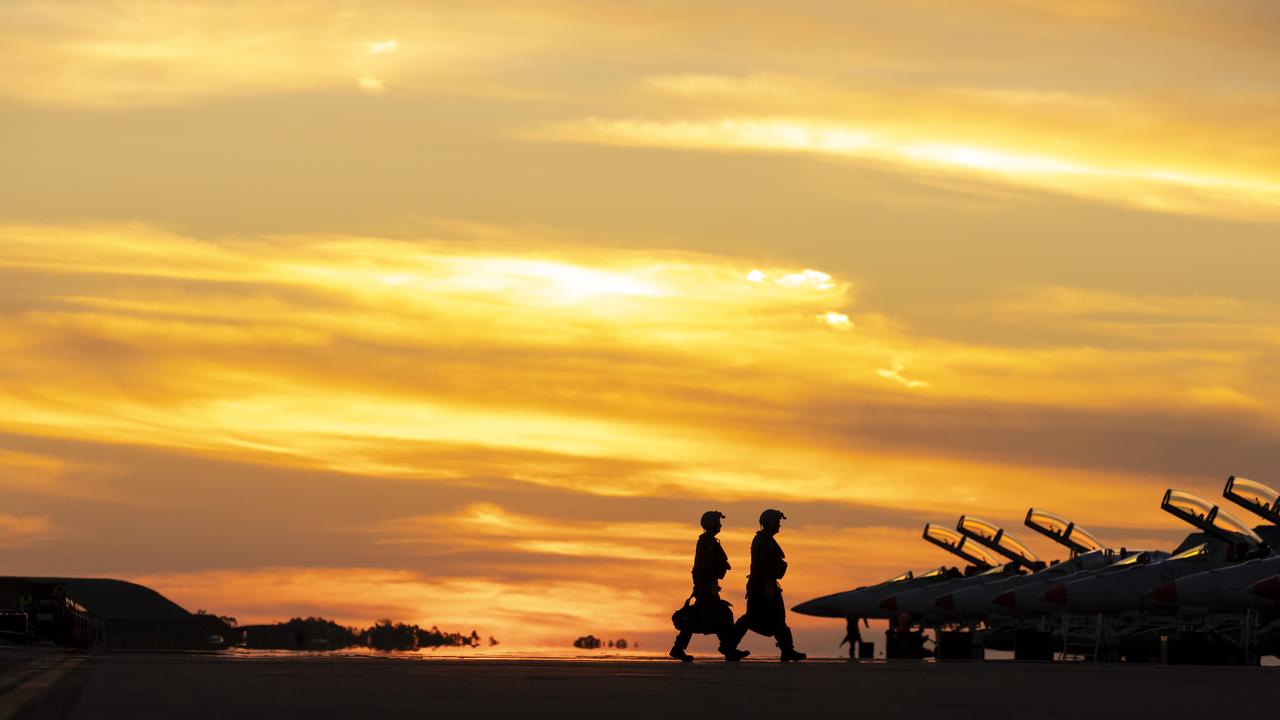
The review also did not include "functional capabilities" like nuclear, space and cyber, because those are being addressed in other Department specific reviews, the official said.

The review also did not include "functional capabilities" like nuclear, space and cyber, because those are being addressed in other Department specific reviews, the official said.

President Biden’s top adviser for Asia, Dr Kurt Campbell, has said he expects the US and Australia military to become “melded” together in a way unimaginable twenty years ago, as the AUKUS security pact comes to fruition.
Dr Campbell said the AUKUS pact “tied Australia more deeply to us”, and both Australia and the UK had made “a fundamental strategic choice to work with the US” in the Indo-Pacific.
“High level” teams in the US, Australia and UK were working on “doing whatever possible to provide the Royal Australian Navy with options to build nuclear subs as rapidly as possible”, Dr Campbell said.
https://www.youtube.com/watch?v=mmBRgv7WnYU

“There are plenty of others who don't want to see this go ahead, I think that tells you why it's so important that we do.”

The stakes for war and peace could hardly be higher. The Morrison government and the leadership of our defence, intelligence and security agencies understand these developments.
But it’s one thing to see you are facing a crisis and quite another to know what to do. Strategic trends in the region are lifting the importance of northern Australia. Our north is, in fact, the essential southern rampart of the Indo-Pacific. The outcome is to make the future of the Port of Darwin a central strategic question. This becomes clear by looking at the plans and purposes of Chinese military growth.
There is no more important step the Morrison government could take than to end the 99-year lease of the Port of Darwin to Chinese company Landbridge.
The threadbare excuses that were deployed to justify the lease in 2015 have long been abandoned by government and opposition. Now, when the Prime Minister warns about the priority “to enhance the resilience of Indo-Pacific supply chains”, we must realise that our ports and airports are critical joints in those supply chains.
The Port of Darwin, and the Top End in general, is the place from which Australia can mount efforts to resist Chinese subversion of the Pacific Islands. The Port of Darwin is also the place to which the USA and other partners can disperse and sustain their forces while deterring Chinese aggression.
Six years into the lease of the port the promised development of infrastructure for tourism isn’t happening. The strategic outlook has changed fundamentally. Landbridge’s presence is now a bone in the throat preventing the development of Darwin as a facility for greater engagement by the AUKUS and Quad partners.

The US military plans a dramatic and comprehensive ramping-up of its defence presence in the Northern Territory to counter the rising threat of China – measures which experts say will, for the first time, involve all four branches of the American armed services.
Senior US and Australian defence officials and analysts, speaking on background, confirmed to the Defence Special Report that while “final details were getting worked out”, the measures envisaged big increases in joint US air exercises, troop deployments, pre positioning of equipment, and the use of more sophisticated weapons systems across the Northern Territory’s key training ranges.
Spurred by growing perceptions of a rising Chinese threat, last month’s announcement of the AUKUS trilateral defence agreement will see the transformation of the Top End from a very convenient military training area for the ADF and its allies to a vital southern US defence anchor encompassing a vast area of the Pacific, linking Guam to the north and Hawaii to the east.
These are bigger consequences and will have a bigger, more immediate, impact to the region.